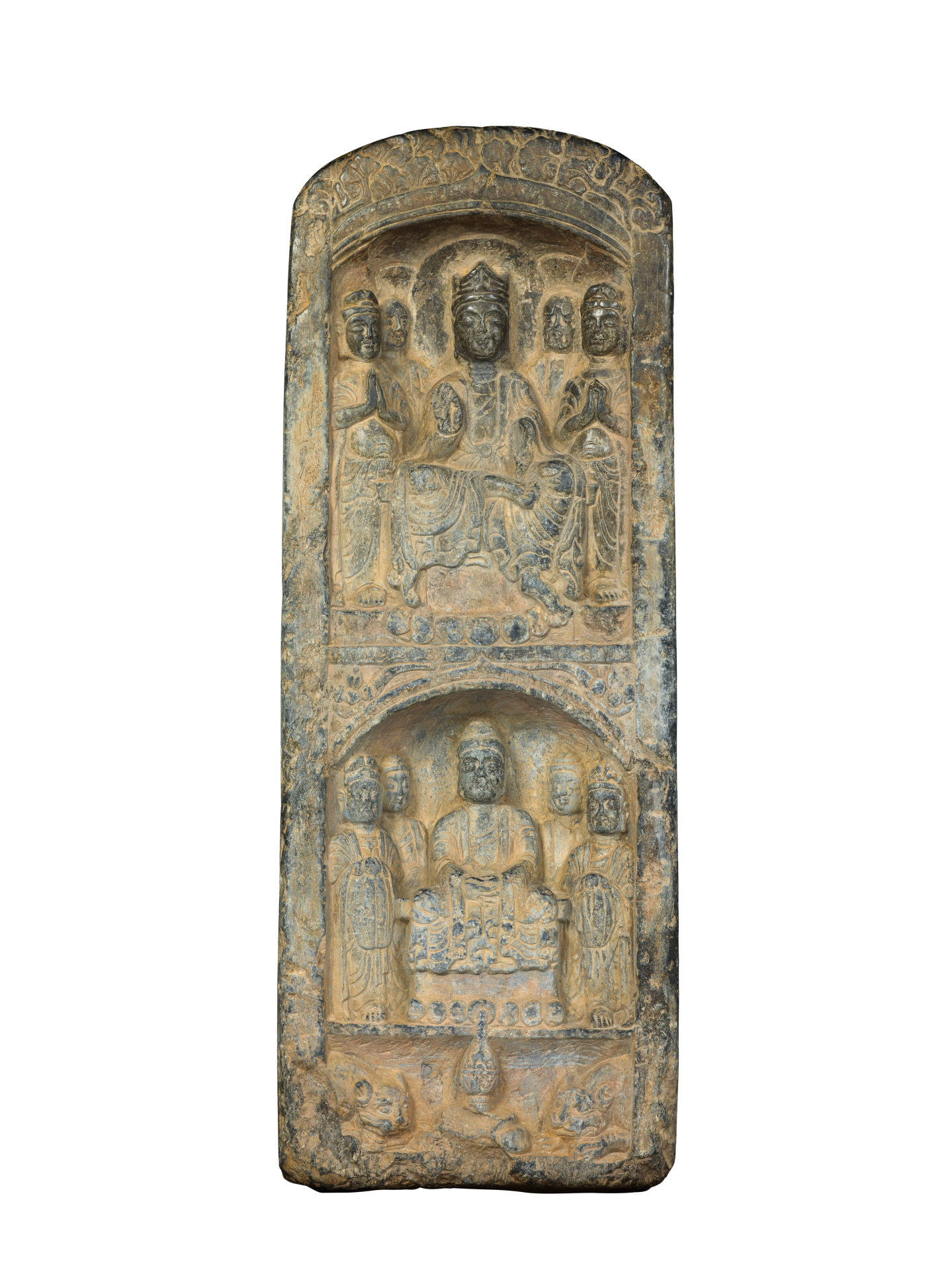Votive Stele with Two Niches
Votive steles combining stele-carving and sculpted niches containing Buddhist images prevailed during the Northern and Southern Dynasties (420-589 CE), but were rarely produced after the Sui dynasty (581-619 CE). The front of this votive stele is carved with two ogive niches, one above the other, each containing five relief images. The lintel of the upper niche is decorated with a canopy-like tree. The principal deity is a Bodhisattva seated in ‘relaxation posture’ (lalitāsana), flanked by two acolyte Bodhisattvas and two disciples. The lintel of the lower niche features lotus borne on long stalks running down both sides from the apex. The grouping comprises a Buddha, two Bodhisattvas and two ‘Solitary Realisers’ (pratyekabuddhas).
The Bodhisattva seated in ‘relaxation posture’ wears a regal crown, a shawl around his shoulders and a criss-crossed long necklace with a plaque anchored at the front and two ends hanging down in long swags, forming an X-shape in front of the belly. The hem of the long skirt drapes around the front edge of the pedestal. He wears a faint smile. His right hand is in ‘fearless gesture’ (abhayamudrā) and his left hand in ‘wish granting gesture’ (varadamudrā). He is seated with the left leg pendent and resting on a lotus grown out from the side of the stepped pedestal. The acolyte Bodhisattvas and disciples on his sides have a serene and dignified countenance. They are joining their palms, apparently listening attentively to the teaching of the principal deity. The knitted brows and aged face of the acolyte bhikṣu on the right is recognisably Mahākāśyapa; the left one Ānanda.
The seated Buddha in the lower niche has a prominent uṣṇīṣa, smooth plain hair and an oblong face. He is seated with legs locked in ‘lotus posture’ (padmāsana) on a stepped pedestal, and hands in ‘meditation gesture’. He wears a kāṣāya with collars hanging down both shoulders, over an undergarment (saṃkakṣikā). The hem of the robe drapes over the edge of the pedestal. The acolyte Bodhisattvas are standing by his side with hands cupped. The bottom of the stele is carved with a hill-shaped censer flanked by a pair of tame and adorable seated lions with only their upper body visible.
The figures on this votive stele are rather short in stature, with slightly oversized head and column-like cylindrical body – typical elements of the Northern Zhou (557-581 CE) statuary. The niche design and the form of the pedestal bear strong flavour of the characteristic sculptures found in central Shaanxi Province.
